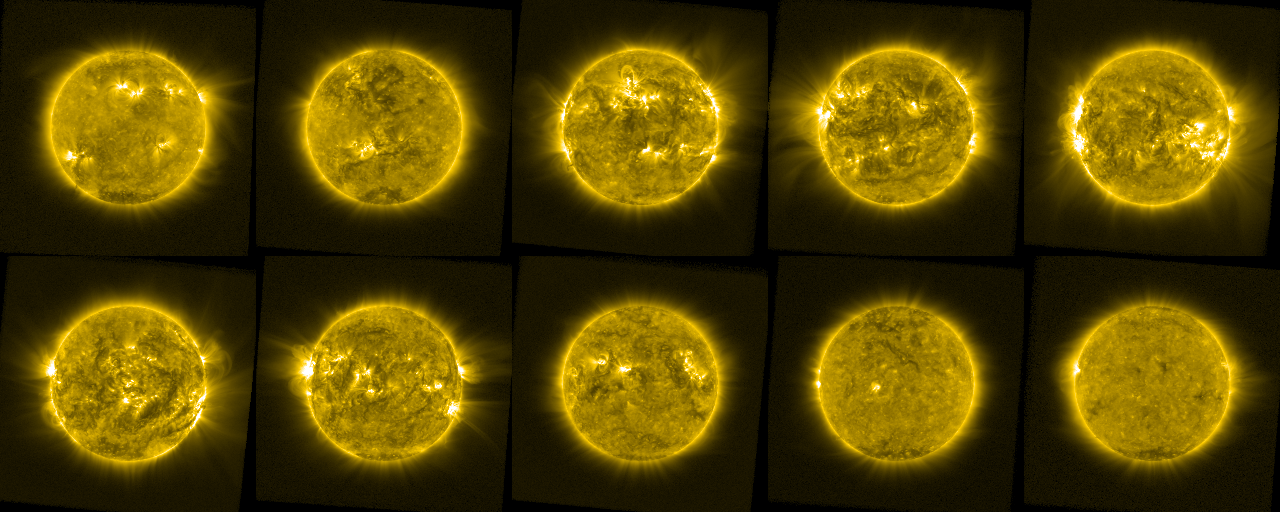

View larger. | The individual frames of the image shown here were captured on (top row, left to right): 20 February 20, 2010; February 1, 2011; January 20, 2012; February 5, 2013; January 28, 2014; and (bottom row, left to right) January 19, 2015; February 5, 2016; January 22, 2017; February 2, 2018: February 1, 2019. Image via ESA/Royal Observatory of Belgium.
Last week marked 10 years that ESA’s Proba-2 satellite (launched on November 2, 2009) has been orbiting the Earth, imaging and observing the sun.
This image, released by ESA on November 10, 2019, shows 10 different views of the sun captured throughout Proba-2’s lifetime, processed to highlight the extended solar atmosphere – the part of the atmosphere that’s visible around the sun’s main circular disc.
According to a statement from ESA about the image:
The sun’s activity has a cycle of about 11 years, with the presence and strength of phenomena such as flares, coronal mass ejections, dark ‘coronal holes’ and bright ‘active regions’ fluctuating accordingly. These images were taken by Proba-2’s extreme-ultraviolet SWAP instrument, and show a snapshot of the sun in January or February of each year from 2010 to 2019 (with the oldest frame on the top left, and the most recent to the bottom right). This mosaic thus neatly shows the variability in the solar atmosphere in beautiful detail, demonstrating how this cycle affects the sun. The sun begins in a phase of low activity (solar minimum: top left) in 2010; enters a phase of increasing activity and then shows highest activity in 2014 (solar maximum: top right). It slowly calms down again to enter a low-activity phase in 2019 (another minimum: bottom right).
Bottom line: Ten images of the sun taken by the ESA Proba-2 satellite, one from each year from 2010 to 2019.
Source:
https://earthsky.org/space/10-suns-for-10-years-image